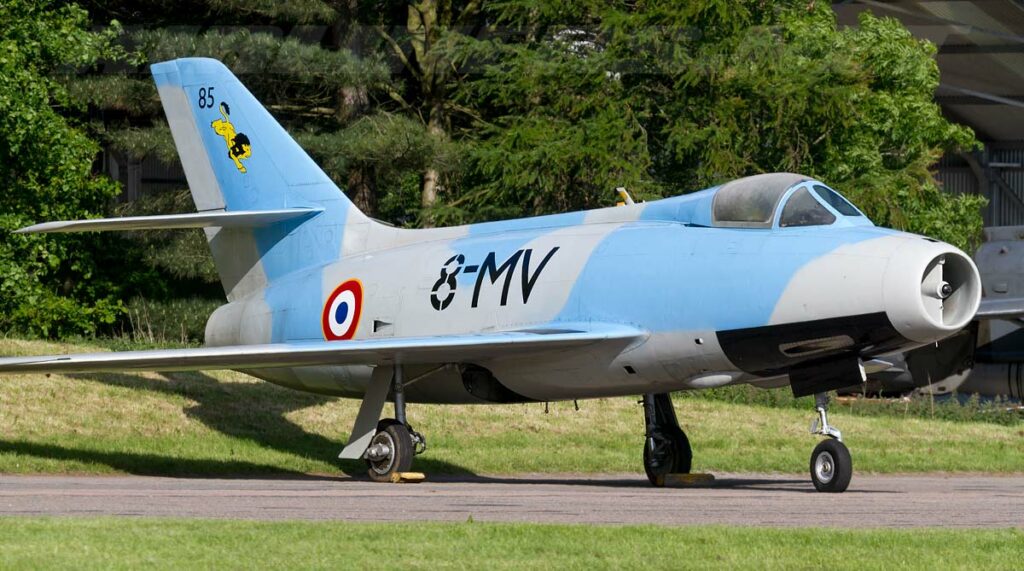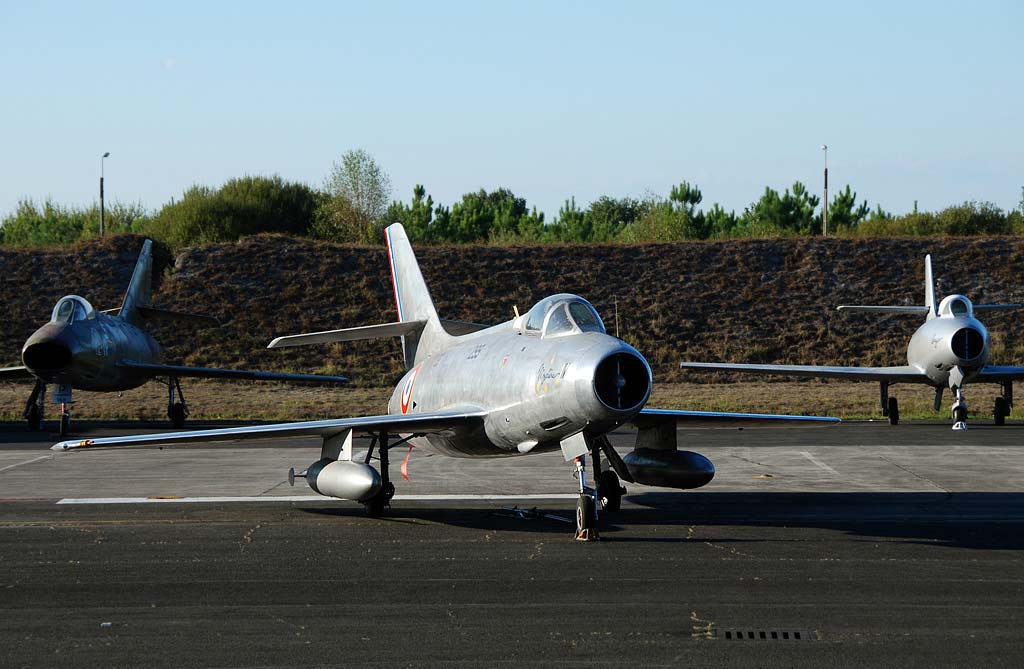The Dassault Mystère, a French transonic fighter-bomber, was known for its swept-wing design and significant role in Cold War aviation.
In brief
The Dassault Mystère series, developed in the early 1950s, represented a significant advancement in French aviation technology. Stemming from the successful line of Dassault fighter aircraft, the Mystère incorporated swept-wing design, enhancing its aerodynamic performance. As one of France’s first transonic fighters, it played a crucial role in the modernization of the French Air Force during the Cold War. Equipped with a powerful Hispano-Suiza turbojet engine, the Mystère offered impressive speed and maneuverability. It saw combat in various conflicts, notably the Suez Crisis and Indo-Pakistani War, proving its capabilities as an effective fighter-bomber. The Mystère’s development marked an important step in France’s contribution to jet aircraft technology during the post-World War II era.
The Dassault Mystère series epitomized the rapid advancements in jet fighter technology during the early Cold War period.

History of the Development of the Dassault Mystère
The Dassault Mystère was developed during a period of intense military aviation innovation. Post World War II, there was a global race to develop faster, more agile fighter aircraft. France, keen on re-establishing its aerospace industry, initiated the Mystère program to create a superior jet fighter that could compete with contemporary designs from the United States and the Soviet Union.
The program was launched by Dassault Aviation, with the first flight of the Mystère occurring on February 23, 1951. The aircraft was developed to meet the evolving needs of aerial combat and to solidify France’s position in advanced fighter design.
While the Mystère series did not have a specific NATO nickname, it was a pivotal part of France’s contribution to NATO’s air capabilities during the Cold War.
Design of the Dassault Mystère
The Dassault Mystère’s design was a significant evolution from its predecessors. It featured a 30-degree swept-wing, which improved its aerodynamic performance, particularly at high speeds. The aircraft was powered by a Hispano-Suiza Verdon 350 turbojet engine, providing around 7,500 pounds of thrust.
Measuring 12.89 meters (42.3 feet) in length with a wingspan of 11.12 meters (36.5 feet), the Mystère was designed to be robust and versatile. It could carry a range of armaments, including cannons, bombs, and later, air-to-air missiles.
Despite its advancements, the Mystère faced challenges such as limited range and high landing speeds, which required skilled piloting.
Performance of the Dassault Mystère
The Dassault Mystère’s performance was reflective of early transonic fighter designs. It could reach a top speed of approximately 1,120 km/h (696 mph) and had a service ceiling of 15,000 meters (49,213 feet). The aircraft’s operational range was around 1,300 kilometers (808 miles).
Compared to contemporaries like the North American F-86 Sabre and the Mikoyan-Gurevich MiG-15, the Mystère was competitive in terms of speed and agility, though it faced limitations in operational range and altitude capabilities.
Variants of the Dassault Mystère
The Mystère series included several variants:
- Mystère I & II: Early versions with straight wings.
- Mystère IVA: The most widely produced variant, featuring a swept-wing design and an upgraded engine.
- Mystère IVB: An experimental version equipped with an afterburner, offering enhanced performance.
Each variant represented incremental improvements in speed, armament, and overall flight performance.

Military Use and Combat of the Dassault Mystère
The Mystère’s armament included cannons and a variety of air-to-ground munitions. It saw significant action in the Suez Crisis (1956) and the Indo-Pakistani War (1965), proving its effectiveness in ground-attack and aerial combat roles.
The aircraft competed with various contemporary designs and was exported to several countries, including Israel and India, enhancing its operational history. The Mystère was eventually replaced by more advanced aircraft like the Dassault Mirage series.
The Dassault Mystère played a pivotal role in the evolution of jet fighter technology in France and globally. As one of the early transonic fighters, it marked a significant step in aerodynamic design and military capability. Its service in various conflicts demonstrated its effectiveness as a fighter-bomber, cementing its place in aviation history. The Mystère’s legacy is reflected in its contribution to advancing jet technology and its role in shaping modern aerial combat tactics.
Back to the Fighter Jet section.